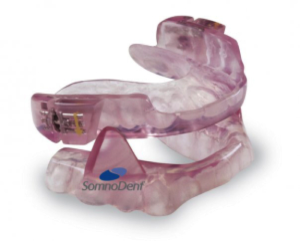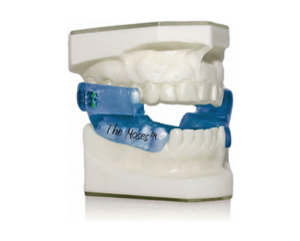- NYC UES Office
- 970 Park Avenue, Suite GFN,
New York, NY 10028
- Carnegie hill Office
- 1175 park avenue,
new york, ny 10128
Non-Surgical Sleep Apnea Treatment Options
Weight Loss:
The most common cause of OSA is obesity, so losing weight is important for those who are overweight regardless of OSA severity. For mild sleep apnea, this might be enough.
Oral Appliances:
Non-compliance with CPAP therapy is a common issue. Fortunately, Mandibular Advancement Devices (MAD), also referred as Oral Appliance Therapy (OAT) is indicated for mild to moderate OSA patients if they prefer it to CPAP, cannot tolerate CPAP, or are unable to use weight loss or positional therapy to control their apnea.
Oral appliances have also been recommended for severe OSA patients if they cannot tolerate CPAP. However, patients with severe OSA should always try CPAP before considering oral appliance therapy. In severe OSA patients, oral appliances can sometimes be used in conjunction with CPAP, because when used together, lower CPAP pressures may be just enough to resolve the sleep apnea while still making it therapeutic.
Custom-made oral appliances appear similar to mouth guards used in sports. They work by repositioning the tongue inside the mouth and bringing the lower jaw forward to help maintain an open airway during sleep. Doctors and dentists trained in sleep apnea treatment and medicine such as NYC Sleep Apnea Specialist Ruben Cohen, DDS know how to select, fit, and adjust the oral appliance so patients may once again experience restful sleep.
It is essential that patients undergoing Oral Appliance Therapy receive ongoing care, including regular follow-up appointments. The purpose of ongoing care is to assess and monitor the patient’s sleep disorder, the condition of the oral appliance, and the patient’s physical response to the appliance. Follow-up appointments will ensure that the oral device is comfortable and effective, and may serve to reduce patient non-compliance with sleep apnea treatment.
 SomnoMed Appliance
SomnoMed Appliance The Moses Appliance
The Moses ApplianceContinuous Positive Airway Pressure (CPAP):
Nasal Continuous Positive Airway Pressure, or CPAP treatment, requires the patient to wear a mask over the nose during sleep. The mask is connected by a hose to a small air pressure generator. When the mask is worn, the air pressure inside the throat is increased. The air pressure is adjusted so that it is just enough to prevent the throat from collapsing during sleep. The CPAP eliminates a person’s snoring, gasping, and choking during the night. The CPAP prevents airway closure while it is worn, but apnea episodes will return when CPAP is stopped or if it is used improperly. CPAP technology has improved considerably in the past five years. The devices are much quieter and there are numerous mask options that improve the fit and comfort.
Treatment with CPAP requires adjustment (or titration) of the amount of pressure needed to keep the airway open. Patients who have an ARES study no longer need to have a CPAP pressure setting determined in the laboratory. Multiple studies have shown that auto-adjusting CPAPs, which automatically deliver the correct pressure, are as effective as in-laboratory determined pressure. Alternatively, the CPAP pressure can be predicted using a formula and the pressure adjusted until the snoring subsides. CPAP units are obtained from Durable Medical Equipment providers with a prescription provided by your physician.